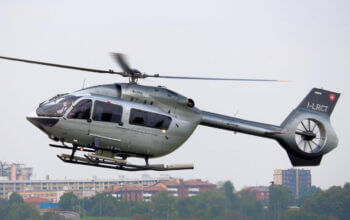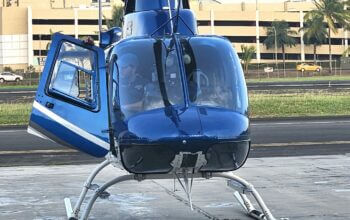Estimated reading time 5 minutes, 28 seconds.
The Federal Aviation Administration’s (FAA’s) Drone Advisory Committee (DAC) on June 23 approved four recommendations to adopt gender-neutral language for the drone community, signaling a shift away from gendered terms that have been used for decades.
During a Feb. 24 meeting of the DAC, a sub-group was tasked with exploring the viability of including more inclusive language in the FAA’s policies, documents, and public correspondence. The task-group’s goal in supporting this research was to encourage a more diverse set of individuals interested in the unmanned aircraft systems (UAS) industry, said Trish Gilbert, executive vice president of the National Air Traffic Controllers Association, and co-chair of the task-group.

In total, four recommendations were made from the group that, upon approval, were forwarded to the FAA at-large for further implementation. They include adopting gender-inclusive language wherever possible, implementing it via a standardized style guide, applying it effectively, and then transforming communication for the broader aviation industry. This shift, for example, will allow the FAA to change traditionally gendered terms such as “airmen” to something more neutral, such as “aviator.”
The announced recommendation comes as more data shows that women are severely under-represented in the aviation industry. Just 6.7 percent of the current registered FAA drone pilots are women.
In 2020, when the Aircraft Owners and Pilots Association (AOPA) held its annual scholarship program for pilots looking to obtain a primary license, 27 percent of the winners were female-identifying. In 2021, when the association increased outreach efforts to women’s aviation organizations and other traditionally under-represented groups, the number jumped to 44 percent, according to data provided by AOPA to the DAC.
This move towards gender-inclusive language could help create a more diverse talent pool for the emerging drone industry, said Michelle Schwartz, chief corporate strategy and affairs officer at Los Angeles World Airports. “Attracting and retaining people regardless of gender or gender identity is crucial so that the drone industry does not face the same labor shortages that are currently affecting the broader aviation industry,” she said.
The pilot shortage facing the industry as a whole has been a crisis looming for decades, caused by increasing mandatory retirements at the airlines and a booming expansion of demand. In 2020, Boeing’s Pilot and Technician report projected that over 750,000 new pilots will be needed globally over the next 20 years to meet this challenge. As the industry rebounds from the COVID-19 pandemic, major airlines have been cancelling flights due to staffing shortages.
Keeping in line with the FAA’s important focus on safety, the committee also stressed how more inclusive language can promote a stronger safety culture. “Communication is a critical aspect of crew resource management,” Schwartz said. “Gendered language can reinforce hierarchical thinking and diminishes trust, therefore discouraging crewmembers from speaking up when issues arise.”
Regardless of the importance of making this change, some committee members were careful to recognize the challenges associated with such a move. Language embedded in existing statute or even common acronyms used by pilots everyday could be difficult to adjust in the short term.
For example, NOTAMs, or “Notices to Airmen” — which help notify pilots of potential hazards and safety issues in the airspace system — are used daily by aviation professionals and could present a challenge if changed across the entire system. Chris Anderson, CEO of drone software company 3DR, said that, in this case, “NOTAM” may be adopted as a standalone word rather than an acronym.
Other proposed changes within the report include changing “unmanned” to “uncrewed,” and replacing “repairman” with “technician.” The next step towards implementation will be for the FAA to review the detailed committee findings and determine how to integrate each recommendation.
“As a father of identical 19-month-old triplet girls, I thank you,” said committee member Jaz Banga, CEO of Airspace Systems, Inc. “This is about access to opportunity.”









“gender-inclusive language could help create a more diverse talent pool for the emerging drone industry”
Do you realize that the term “drone” is a male worker bee?